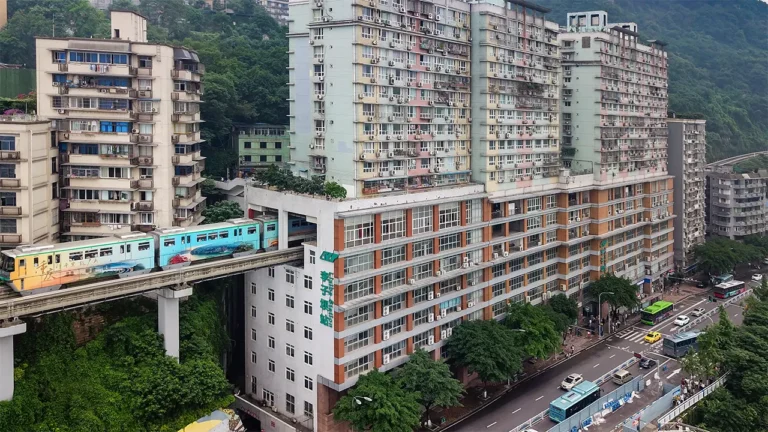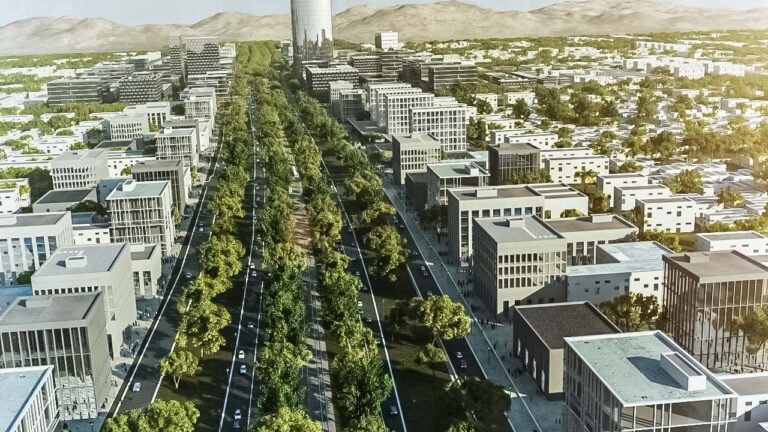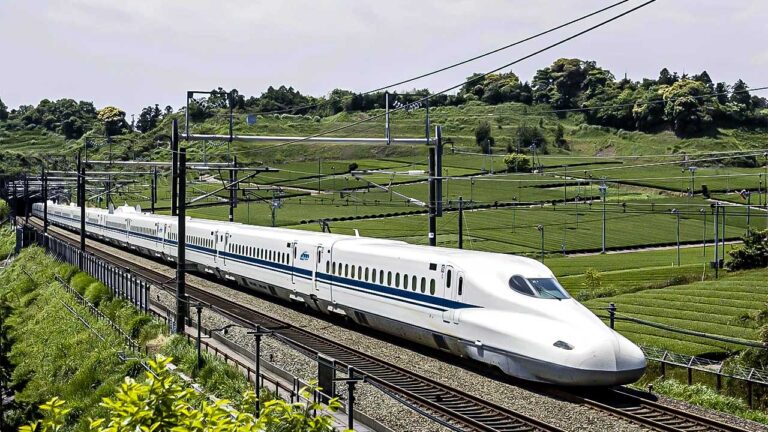Africa’s First High-Speed Rail: Egypt’s $23 Billion Bet on the Future
Egypt is building Africa’s first high-speed rail network a fully electric system stretching more than 2,000 kilometers, linking 60 cities at speeds of up to 250 kilometers per hour. With an estimated cost of over $23 billion, this project is more than just transportation. It’s a national spine of steel and power, connecting the Red Sea to the Mediterranean, and Cairo to the Sudanese border. Some have already called it the “rail Suez Canal” a modern corridor that could reshape trade, travel, and opportunity across the continent.
Standing on the edge of the New Administrative Capital’s construction site, I could feel the ground tremble beneath the machinery a reminder that Egypt is racing time and geography to redefine its future.
Why Egypt Is Betting on High-Speed Rail
With a population now surpassing 110 million and over 60% under the age of 30, Egypt’s growth is intense and unrelenting. Public transport is overcrowded, roads are dangerous, and the existing train network is slow and outdated. For a nation aiming to join the world’s top 30 economies by 2030, these bottlenecks are more than an inconvenience they’re a drag on progress.
The government’s solution is bold: a nationwide high-speed rail system that will cut travel times drastically, open new economic corridors, and connect urban hubs to rural regions in ways that existing roads never could.
A Global Race for Rail Dominance
Egypt’s project is part of a broader global movement where nations are pouring billions into rail as a backbone for growth, security, and climate goals.
In Central Africa, the Lobito Corridor backed by the U.S., EU, and African partners is rapidly upgrading freight rail from Angola’s Lobito port through the Democratic Republic of Congo to Zambia’s Copperbelt. Washington views it as a strategic counterweight to China’s Belt and Road investments in Africa, giving landlocked mineral-rich nations faster access to global markets.
In Mexico, the $29 billion Tren Maya is pushing ahead despite fierce controversy over environmental impact and indigenous rights. Designed to connect five southeastern states, its strategic aim mirrors Egypt’s stimulate tourism, integrate neglected regions, and create new economic lifelines.
In Saudi Arabia, the $22 billion Riyadh Metro is nearing completion, with over 176 kilometers of track weaving through the capital. Like Egypt, Saudi Arabia is racing against deadlines, balancing engineering challenges with the pressure to deliver on its Vision 2030 promises.
Against this backdrop, Egypt’s high-speed rail isn’t just a national project it’s an entry in the global race to control the future of mobility.
The Network: Three Lines, One Vision
The high-speed rail is being built by Siemens Mobility, Orascom Construction, and The Arab Contractors a partnership tasked with delivering a fully electric, triple-line network.
Green Line – The 660-kilometer east-west link from Ain Sokhna on the Red Sea to Marsa Matrouh on the Mediterranean. Passing through the New Administrative Capital, Giza, and Alexandria, it will carry up to 30 million passengers annually.
Blue Line – A north-south artery from Giza to Abu Simbel, near the Sudanese border. Plans are underway to extend it to Toshka and Wadi Halfa in Sudan, creating a potential Cairo–Khartoum corridor for trade and travel.
Red Line – Linking Luxor to the Red Sea ports of Safaga and Hurghada, this line will boost freight, agriculture, and tourism much like Tren Maya’s plan to connect Mexico’s Mayan Riviera with inland towns.
Each line has a role beyond transportation: to anchor new housing developments, feed industry, and strengthen Egypt’s integration into global trade routes.
Engineering in Extreme Conditions
Constructing high-speed rail through Egypt’s deserts and mountains demands engineering precision. More than 11 million cubic meters of soil have been excavated, and volcanic basalt is being used to stabilize railbeds against intense heat. With summer temperatures reaching 50°C, materials must resist warping, and all train components are sealed against dust and sandstorms.
The power backbone consists of substations, transformers, and overhead catenary lines designed for both durability and redundancy a lesson drawn from projects like the Riyadh Metro, which has faced similar climate stress during construction.
Rolling Stock and Smart Control
Egypt’s high-speed services will use Velaro trains capable of 250 km/h, climate-adapted, dust-sealed, and capable of carrying 481 passengers. Regional routes will deploy Desiro intercity trains, while freight will rely on Vectron electric locomotives for long-haul cargo efficiency.
Siemens is integrating ETCS Level 2 signaling and the Railigent X AI platform for predictive maintenance. This mirrors advanced systems seen in the Lobito Corridor freight upgrades, where digital monitoring is essential for maximizing uptime in remote terrain.
Stations as Growth Engines
Major hubs like Giza, October Gardens, and 6th of October City will operate as integrated urban centers with retail, parking, and multimodal links. This strategy reflects global trends: Tren Maya stations are being built to draw tourism investment into rural towns, while Lobito Corridor terminals aim to attract processing plants and export facilities.
In Egypt, these stations will serve as magnets for new neighborhoods, industry clusters, and commercial zones a deliberate attempt to reshape settlement patterns and relieve pressure on Cairo.
Economic and Strategic Stakes
Once complete, the network will connect 60 cities and more than 60 stations, directly supporting ports, airports, and industrial zones. The government estimates over 500,000 jobs will be created during construction and operation.
Strategically, Egypt is positioning itself as a continental gateway. Links to Sudan and possible future extensions toward Libya could tie North Africa more closely to sub-Saharan economies. This mirrors the geopolitical dimension of the Lobito Corridor, where rail is not just logistics but a lever of influence in global resource chains.
The Environmental Equation
The high-speed network is expected to cut CO₂ emissions by 70% compared to equivalent car or air travel. Electrified transport aligns with Egypt’s climate commitments and its hosting of COP27, much like Saudi Arabia’s push to green its public transport through the Riyadh Metro.
Still, environmental oversight is critical. The Tren Maya project has shown how rail construction can spark major ecological debates, especially when passing through fragile ecosystems. Egypt must balance development with protection of archaeological and natural heritage.
Challenges and Criticism
Critics question the project’s affordability in a nation facing inflation and currency pressures. Others worry about bypassing underserved rural regions or damaging archaeological sites.
Similar public skepticism has followed Mexico’s Tren Maya, accused of prioritizing tourism over local needs, and the Riyadh Metro, which has faced delays and cost concerns. Egypt’s success will depend on transparency, fair access, and long-term operational funding.
A New Chapter in African Infrastructure
Egypt’s high-speed rail is more than a construction project it’s a signal to the continent that Africa can build at the same scale and ambition as Europe, Asia, or the Gulf. It stands alongside the Lobito Corridor, Tren Maya, and Riyadh Metro as part of a 21st-century rail renaissance that is redrawing maps, economies, and alliances.
If Egypt delivers on its vision, the result will be a national and regional transformation: faster trade, cleaner transport, new cities, and a bridge between Africa, the Middle East, and Europe.
Watching the track stretch into the desert, I realized this isn’t just steel on sleepers. It’s a bet on a faster, more connected Africa one that’s already leaving the station.
